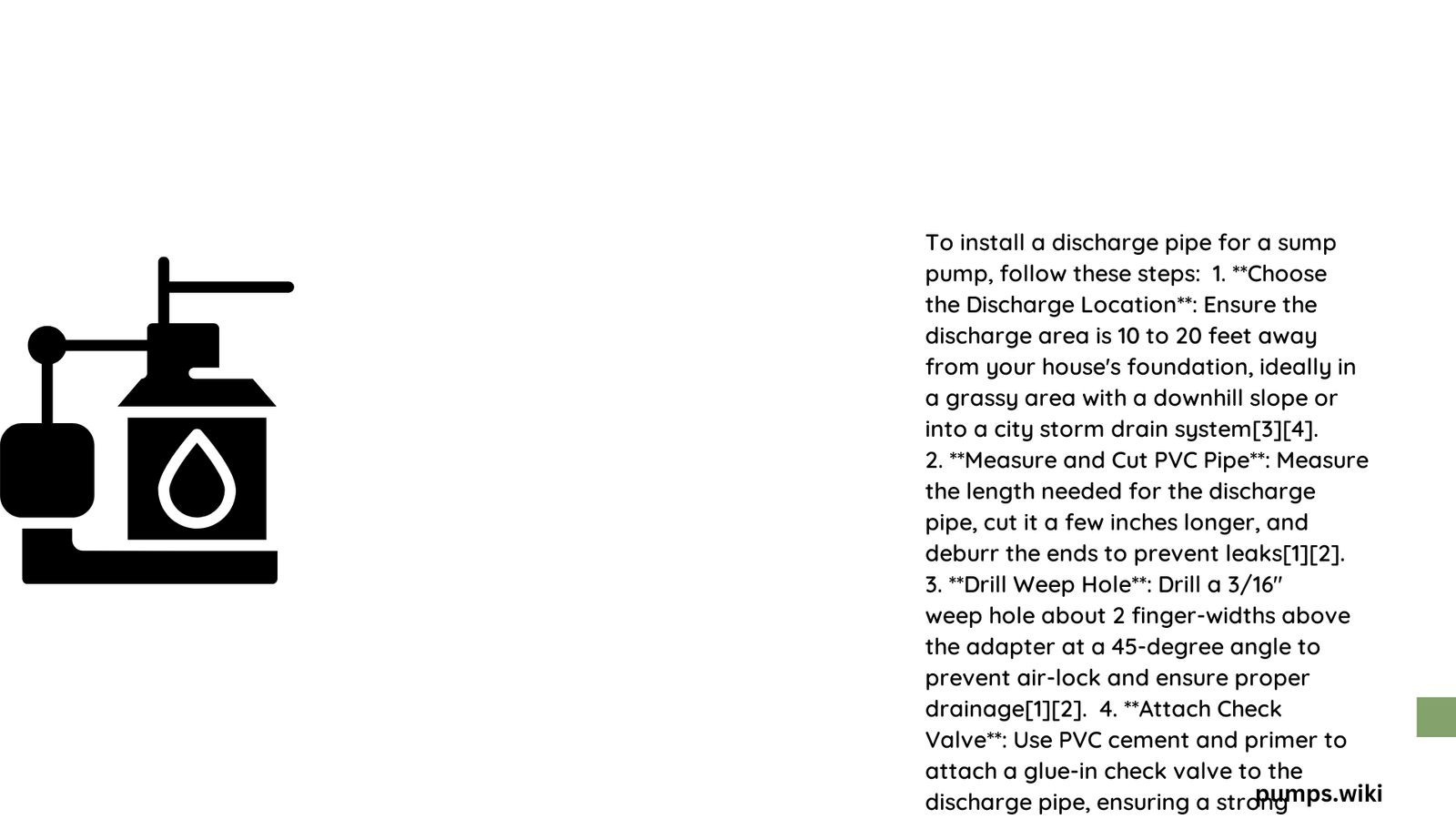Installing a discharge pipe for a sump pump is a critical home maintenance task that prevents water accumulation and potential foundation damage. Homeowners must carefully select appropriate materials, understand proper installation techniques, and ensure correct slope and positioning to effectively redirect water away from the property’s foundation. This comprehensive guide will walk you through every essential step of discharge pipe installation, providing expert insights and practical recommendations.
What Materials Do You Need for Sump Pump Discharge Pipe?
Before beginning the installation, gather the following materials:
| Material | Recommended Type | Estimated Cost |
|---|---|---|
| Pipe | Schedule 40 PVC | $1.50-$2.00/foot |
| Check Valve | Spring-loaded | $15-$30 |
| PVC Cement | Professional Grade | $5-$10 |
| Pipe Fittings | Male Threaded Adapter | $3-$7 |
Why Choose PVC for Discharge Pipe?
PVC pipes offer several advantages for sump pump discharge:
- Durability: Resistant to corrosion and chemical damage
- Lightweight: Easy to handle and install
- Cost-effective: Affordable compared to metal alternatives
- Weather-resistant: Performs well in various environmental conditions
How to Determine the Correct Discharge Pipe Size?

Selecting the appropriate pipe diameter is crucial for optimal performance. Consider these factors:
- Pump Capacity Calculation
- Measure your sump pump’s gallons per minute (GPM)
- Standard residential pumps typically require 1.5-2 inch pipes
-
Use the formula: Pipe Diameter = √[(4 × Flow Rate × 0.00223) ÷ Velocity]
-
Discharge Height Considerations
- Longer discharge lines require larger diameter pipes
- Avoid pipes exceeding 20 feet to prevent motor strain
- Maintain a consistent 1/4 inch slope per foot for proper drainage
What Are the Key Installation Steps?
Follow these precise steps for successful discharge pipe installation:
Step 1: Select Discharge Location
- Position discharge point 10-20 feet from foundation
- Choose areas with downward slope
- Avoid locations near property lines or neighbor’s property
Step 2: Prepare and Cut Pipe
- Measure exact distance from sump pump
- Use hacksaw for clean, precise cuts
- Deburr pipe edges to prevent potential leaks
Step 3: Install Check Valve
- Attach check valve to prevent water backflow
- Use rubber coupling boot for secure connection
- Ensure valve is oriented in correct flow direction
Step 4: Connect Pipe to Sump Pump
- Apply PVC primer and cement
- Use male-threaded adapter
- Avoid over-tightening connections
How to Prevent Freezing and Blockages?
Protect your discharge pipe during cold weather:
- Bury pipe below local frost line (typically 40 inches deep)
- Create air gap at discharge point
- Consider heat tape for extreme climates
- Insulate exposed pipe sections
Common Troubleshooting Tips
Watch for these potential issues:
– Unusual pump cycling
– Water pooling near discharge point
– Reduced pump efficiency
– Visible pipe damage or leaks
Professional Recommendations
- Conduct annual discharge pipe inspection
- Clean pipe annually to remove sediment
- Monitor slope and drainage performance
- Replace worn components promptly
Cost Considerations
Total installation typically ranges:
– DIY: $100-$300
– Professional installation: $300-$600
Reference:
– Sump Pump Installation Guide
– Drainage System Best Practices
